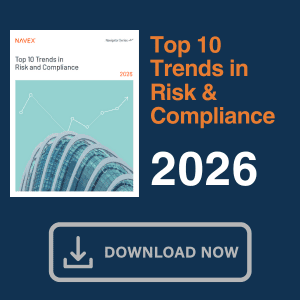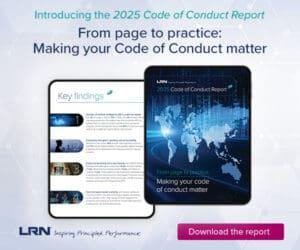So-called “forever chemicals” have been linked to serious health problems, and regulators in both the U.S. and Europe are poised to issue rules that would eliminate these chemicals from the supply chain. Assent’s sustainability director, Cally Edgren, explores the driving forces behind possible regulation.
Per- and polyfluoroalkyl substances (PFAS) have become a hot subject for regulators. This family of durable, synthetic fluorocarbons is persistent, bioaccumulative and toxic and may be linked to health issues such as:
- Increased risk of thyroid disease and blood cholesterol levels
- Decreased fertility in women
- Lower infant birth weight
Lawmakers in many jurisdictions are taking steps to eliminate PFAS from the supply chain. Here’s a comparison of PFAS regulations in the EU and the U.S.
The EU regulatory landscape
The cornerstone chemicals compliance regulation in the EU, REACH, is poised to restrict the use of more than 10,000 PFAS chemicals.
In February 2023, the European Chemicals Agency (ECHA) published a proposal to create a strict definition of PFAS and amend the REACH list to include nearly all PFAS. These restrictions aim to make manufacturing processes and products safer for people and to avoid future environmental contamination.
Troubled Waters: EPA Signals It’s Wading Into the Fray on Environmental Justice
In September, the EPA issued a decision to prevent previously unregulated stormwater pollution from flowing into the watersheds of three Massachusetts rivers. Though the agency has had the authority to do so, it’s the first time the EPA has exercised its residual designation authority under the Clean Water Act on such a broad scale.
Read moreDetailsEU officials have called this regulation “landmark” — not just because of the vast number of in-scope substances but because of the market impact. It will affect both manufacturers located in the EU as well as any companies selling products into the EU. With 440 million consumers, the EU isn’t a market to ignore.
Authorities in Denmark, Germany, the Netherlands, Norway and Sweden formulated the ECHA proposal, suggesting two options to restrict usage:
- A full ban, with no exemptions, and an 18-month transition period after the regulation enters into force
- A full ban with use-specific, time-limited exemptions that would carry an 18-month transition period and a five- or 12-year derogation period, depending on the application
The next step after publishing the proposal is evaluation and consultation. There’s a six-month consultation period that started in mid-March 2023.
There’s enormous pressure from many member states, consumers and NGOs to pass this legislation. It’s tempting for manufacturers to think that because this proposal hasn’t passed, they don’t need to worry about it. But the timeline for engaging with regulators, including requesting derogations for “essential uses,” is short and requires urgent action.
Companies shouldn’t overlook other EU regulations, including at the member state level, that already restrict certain substances, such as the EU’s persistent organic pollutants (POPs) regulation. Some member states are going ahead with their own restrictions and regulations because they feel the restriction process is taking too long at the EU level.
The U.S. regulatory landscape
At the federal level, there are many activities going on with agencies and regulations, but most PFAS action is taking place through the EPA:
- The proposed PFAS reporting rule under Section 8(a)(7) of the Toxic Substances Control Act (TSCA)
- The proposed Drinking Water Act standards for six PFAS (announced March 14)
- The inclusion of PFOA and PFOS in the Comprehensive Environmental Response, Compensation and Liability Act (otherwise known as CERCLA or Superfund)
The TSCA PFAS reporting rule, as proposed in June 2021, will require manufacturers (including article importers) to report on the “manufacture” (including any byproducts or imports, even if incorporated into imported articles) of at least 1,364 PFAS chemicals in any year since Jan. 1, 2011. The information must be reported electronically across numerous data points, including PFAS uses, production volumes, disposal, exposures, and hazards. The EPA was expected to release this rule in March 2023, but as of press time, the final rule remains unpublished (for more details, see the sidebar accompanying this story).
The Drinking Water Act standards, proposed in March 2023, would set national mandatory limits for six PFAS chemicals in drinking water. Once finalized, the proposal would regulate PFOA and PFOS as individual contaminants with a limit of 4ppt permitted. While this is higher than the health advisory levels set in June 2022, the EPA states they set the enforceable limits higher due to limitations in test methodology and detection levels.
The EPA has proposed a regulation for PFNA, PFHxS, PFBS and GenX Chemicals to limit any mixture containing one or more of PFNA, PFHxS, PFBS and/or GenX Chemicals. For these PFAS, water systems would use an established approach called a hazard index calculation, defined in the proposed rule, to determine if the combined levels of these PFAS pose a potential risk.
In September 2022, the EPA proposed designating two PFAS substances as “hazardous” under CERCLA. The inclusion of PFOA and PFOS in CERCLA provides the federal government with statutory authority to investigate, monitor, and respond to hazardous substances that have been released, or are under threat of release, into the environment. CERCLA also creates an enforcement mechanism for the government and private entities to hold parties responsible for the cleanup costs if they are found to be liable for the release of substances that were:
- Specifically designated as hazardous substances under CERCLA
- Determined to present an “imminent and substantial danger to the public health or welfare”
Market drivers of PFAS restrictions
Beyond regulations, there are additional market drivers:
- Suppliers
- Customers and NGOs
- Competitors
- Investors
- Insurers
Suppliers
Suppliers feel the pressure to eliminate PFAS from their supply chains. 3M is an excellent example. The manufacturing giant announced in December 2022 it would end the manufacturing and use of PFAS by the end of 2025. More suppliers will follow 3M’s lead due to decreasing demand and the risk of future litigation from manufacturing PFAS.
Customers & NGOs
Consumers want PFAS-free products. There’s been an uptick in lawsuits targeting companies for false advertising, even when manufacturers don’t intentionally add PFAS, with REI being a recent example. The retailer claimed its products were environmentally sustainable and that the company was taking measures to manage the chemicals used in its products, but allegedly made misleading statements to consumers by selling products that include PFAS.
NGOs are fighting PFAS, too. In the EU, 46 NGOs have demanded the government ban PFAS in consumer products.
Competitors
If companies are not making efforts to remove PFAS from their supply chain, their competitors likely are paying attention to the increased focus on PFAS from regulators and the public. Many companies have announced intentions to eliminate PFAS from their supply chains. The more companies that make these announcements, the higher expectations will be for everyone.
Investors
Investors are also putting pressure on manufacturers to eliminate PFAS from supply chains.
In November 2022, a group of 47 investors with more than $8 trillion USD in assets called for a phase-out of PFAS. As PFAS regulations increase, and consumers demand PFAS-free products, investors don’t want the risk associated with penalties or reputation damage.
Insurers
Insurers might not be an obvious driver to remove PFAS from supply chains, but they’re one to watch out for in the coming months and years. Insurers have become concerned PFAS will be a major issue for their industry, and many are threatening to void liability coverage for PFAS users.
Until now, they’ve managed to avoid being liable for claims for PFAS. However, that could change; insurers worry PFAS lawsuits could become as prevalent as asbestos exposure lawsuits of the past 40 years.
The time to act is now
Companies selling into the U.S. or EU market can’t afford to wait to comply with regulations, even if they’re not in effect yet. As pressure from nonregulatory drivers grows, manufacturers will face greater risks from PFAS. Start addressing those risks now to maintain market access.




 Cally Edgren is vice president of regulatory and sustainability at Assent. She is a proven compliance program leader with experience developing, communicating and executing company goals and strategies. She is a subject matter expert on product materials compliance, as well as market access certifications and has a background in program and process development to support regulatory compliance requirements. Cally possesses 30 years of experience in developing and managing global compliance programs at Rockwell Automation, Kohler Co. and Rayovac.
Cally Edgren is vice president of regulatory and sustainability at Assent. She is a proven compliance program leader with experience developing, communicating and executing company goals and strategies. She is a subject matter expert on product materials compliance, as well as market access certifications and has a background in program and process development to support regulatory compliance requirements. Cally possesses 30 years of experience in developing and managing global compliance programs at Rockwell Automation, Kohler Co. and Rayovac. 






